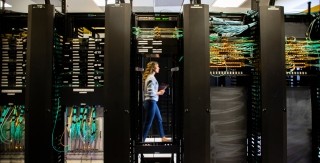An unpredictable year brings renewed focus to (and on) media businesses
March 2, 2021
For an industry as diverse as media and entertainment technology, there were some strong, common themes during the CTS Connects Summit last year that are only more relevant as 2021 starts to kick into high gear.
Each day of the three-day virtual event had a particular industry focus: Content and Streaming Providers, MVPDs and Operators, and Advertisers. As different as each of these disciplines are, there were some striking similarities in how 2020 has impacted every aspect of connectivity – on both human and technological fronts.
We’ve made the recordings of each session available to all of you here. Below are some highlights from the wide range of topics covered.
Day 1: CONTENT AND STREAMING PROVIDERS
“WHATEVER THEY WANT, WHENEVER THEY WANT IT”
During the opening Fireside Chat with Matt Zelesko, EVP & Chief Technical Officer for Comcast Cable, he mused: “The concept of streaming has evolved so much. There’s obviously important differences between streaming content, and what you think of traditionally as our live linear content, but I don’t think customers really think in those terms anymore. And that's why at the core, our job when we're building great entertainment experiences is to understand the differences between these various types of video content, whether it is streaming content, whether it is IP content delivered over our managed network, and make sure our customers can get to whatever they want whenever they want it.”
What’s more, during a panel titled “Streaming Technology: What are the priorities to take us to the next level”, Roma Kojima, Sr. Director of OTT Video for CBC, added, “even the last three or four years that I’ve been at CBC, the biggest change I think I’ve observed (in streaming) is how much we’ve evolved since sort of the ‘wild West where all the organizations were doing some form of it, we were building some things out ourselves, some were trying to use pieces that may have felt out-of-the-box from various – it was like the Weasley house from Harry Potter: a little bit of kluge, a little bit of your own thing, and you made it work because you had to, you had to get this offering out into market and manage it……the one (change) I think the most, is just how much more seamless and easier to market it has become.”
One of the themes across all three days was the need to leverage new efficiencies and automations so that more attention could be placed on better understanding the content-consumer relationship. As innovation lowers barriers it also invites more competition and new opportunities. Global presence is attainable, and important goal; but success rests in the ability to understand and manage content performance across markets, and across screens.
DAY 2: MVPDS AND OPERATORS
A DISRUPTIVE YEAR TO START A NEW DECADE
2020 has seen huge shifts in consumer habits when it comes to media. MVPDs and Operators have seen a definitive spike in video consumption due to quarantine. This year will certainly be analyzed for years to understand what trends die out, and which ones translate into lasting behavioral shifts. It’s also shows just how critical it is to have an infrastructure that can weather the storm.
“I think there's a lot more to come,” said Tony Werner, President Technology, Product, Xperience for Comcast Corporation, “and I think the people working on the network are about as jazzed as they've ever been because we've been able to see that the networks are able to stand up to the traffic, which continues to grow.”
Businesses in this category have some big issues to contend with, and some huge opportunities as well. On the consumer front, new business models are rife with possibilities for broadband companies to build more value. As home automation becomes more dynamic, and as consumers clamor for a way to rein their media sources into one clean, aggregated experience, there was a lot to talk about. On the technical front, in 2021 MVPDs are under federal mandate to physically move their satellite operations away from C-band spectrum. It’s becoming a prime time for these companies to explore moving their operations into a terrestrial, IP delivery model.
DAY 3: ADVERTISING TECHNOLOGY
BUY-SIDE, SELL-SIDE, WIN-WIN
The advertising industry is experiencing warp-speed changes that are transforming the entire industry; from the way real-time ads are transacted and placed all the way down to how the content itself can be customized on the fly via dynamic creative optimization (DCO) to improve campaign results one screen at a time. Day three was filled with conversations on how advertisers are finally getting the automation and centralized control needed in order to make operations more efficient, and campaigns more effective.
Advertisers also need to respond not just to their own technology changes, but also to the changes within digital and linear broadcast destinations. Advertising operations need to be able to intelligently respond to changes fast enough to meet each provider on their own changing turf, be it a TV station, a streaming provider, or a social media app.
The new decade is definitely off and running.
To be clear – the energy brought by the event’s speakers was anything but doom-and-gloom. If anything, 2020 has been a bellweather not just of change (which is a basic expectation), but of the need for smart, definitive action and response as world events shake up everything from network traffic patterns to ad messaging. It’s an exciting time, quarantines and “virtual trade shows” aside. Most participants attended more than one day, demonstrating the interdependence of media businesses. The advances in advertising technology, for example, are just as relevant to a streaming provider or cable operator as they are to an advertiser.




